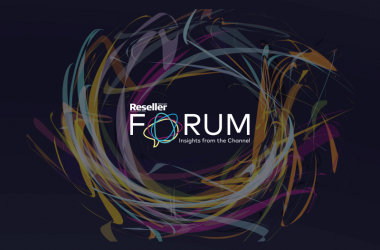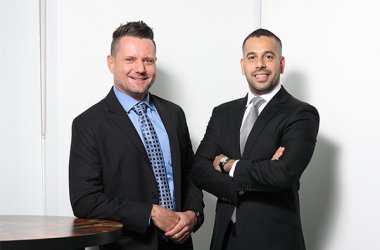
The Great Recession cast a shadow on all sectors of the economy in 2009. IT fared better than most, however, and the slump did not curb the dynamic nature of the industry. Acquisitions among big vendors continued to reshape the market, operating-system wars extended to mobile battlefields, microblogging became a powerful source of real-time information, and the take-up of small, ‘Net-connected devices was stronger than ever. Here, in no particular order, is the IDG News Service’s pick of the top 10 technology stories of 2009.
Oracle (tries) to buy Sun: The big get bigger
Oracle’s April deal to buy Sun Microsystems for $7.4 billion, reportedly outbidding IBM, has the potential to reshape the tech industry. It’s also a denouement for Sun, whose prescient "the network is the computer" tagline has been overshadowed by mounting losses as users take up commodity servers. In dollar terms the acquisition is smaller than Hewlett-Packard’s May acquisition of services giant EDS for $13.9 billion, but could be more of a game-changer because it gets one of the biggest software companies on the planet into the hardware game, zeroing in on the data center. Major players are trying to emulate IBM’s "one-stop shop" for software, hardware and services. Other notable acquisitions this year included HP’s November deal to buy networking company 3Com for $2.7 billion and Xerox’s September agreement to acquire services company ACS for $6.4 billion. The story is not over, though: The European Union is threatening to block the Sun deal, out of fear that Oracle could quash the budding open-source database market by crippling Sun’s MySQL.
Microsoft launches Windows 7 — we can all move on now
On Oct. 22, Microsoft CEO Steve Ballmer took the stage in downtown New York at the lead event for a somewhat — for the software giant — soft-edged launch for Windows 7. Ballmer presided over a day of speechmaking and sales promotions in cities worldwide. But the events were on the whole smaller than the usual major Microsoft launches. The scaled-back hoopla and the marketing mantra of "simplicity" fit Microsoft’s characterization of the new OS — above all, faster and more straightforward to use than its predecessor, Vista. That much-maligned OS was plagued by hardware compatibility problems, slow performance and annoying system alerts. The older Windows XP, as of the Win 7 launch, was still being used by more than 70 percent of computer users. Microsoft, no doubt happy to turn the page on an embarrassing chapter in its history, says Win 7 is being adopted faster than Vista.
Chrome OS: Emperor’s new clothes or paradigm shift?
Just about a month after the Win 7 launch, Microsoft’s archnemesis, Google, released its Chrome operating system to the open-source community. Google said Chrome, due out in about a year, will be faster, simpler and more secure than existing OSes. It probably will be, because it does a lot less than current operating systems. Chrome runs only Web-based applications and will not even be able to run applications built for Google’s own Android mobile OS. That, and the fact that peripherals for Chrome-based machines will have to comply with specific hardware reference designs, means that in no way can it be a replacement for current PC OSes. But that’s the point. Computer users are spending more time accessing Web services and applications. Not many PC owners are ready to throw out their hard drives, but take-up of small, ‘Net-centric devices will one day lead to a tipping point where the majority of users tap the Web for virtually all their computing needs.
Yahoo, Microsoft sign deal … and seal Yahoo’s search fate?
In the end, the two companies worked out something that was less than a marriage of convenience, but which nevertheless managed to fundamentally alter one of the legendary names in Internet search. A year-and-a-half after Microsoft made an unsolicited bid to buy Yahoo for $44.6 billion, kicking off a series of stormy, on-again-off-again talks, the two companies announced a search deal aimed at giving them leverage against Google. The companies agreed to a revenue-sharing deal calling for Microsoft’s Bing to run Yahoo’s search site and for Yahoo to sell premium search advertising services for both companies. This relegates the Yahoo search engine to the dustbin of also-rans, and puts pressure on Carol Bartz, who took the CEO reins from founder Jerry Yang, to build up Yahoo’s non-search technology and services to the point where they can sustain the company. Investors are still holding their breath — Yahoo shares are trading at half the $31 Microsoft offered almost two years ago.
Government 2.0: Obama administration includes tech in stimulus plans
Barack Obama took office with an agenda that included putting IT in the stimulus bill. In February, in the wake of Senate approval, the House of Representatives passed a stimulus package including $7.2 billion for broadband deployment, $17 billion for incentives to adopt electronic health records and $11 billion to hook up the electricity grid to the Internet. Obama, an avid BlackBerry user, had put tech, notably social networking and business intelligence, to work in his campaign. This year, the White House has deployed the Drupal open-source content management system, tapped YouTube for communications, and encouraged projects such as data.gov for data junkies and recovery.gov for the money-followers. The General Services Administration, meanwhile, is opening up a "cloud storefront." In October, the Federal Communications Commission filed a notice of proposed rule-making on net neutrality rules, which would prohibit broadband providers from selectively blocking or slowing Web content. It already seems that one of Obama’s legacies will be the government’s activism in, and tighter embrace of, technology.
Jobs comes back, again
Apple’s comeback kid did it again — but this time, the hurdle Steve Jobs overcame concerned health. At the end of June, Jobs, a pancreatic cancer survivor, returned to work after taking a leave of absence in January, citing health issues. It was later revealed that Jobs received a liver transplant. Investors questioned Apple’s decision to hold back information on Jobs’ condition, and the controversy hit at the heart of a nagging question: What would Apple be without its co-founder’s business acumen and laserlike focus on design? After Apple ushered in the personal computer era with the Apple II and reinvented the PC with the Macintosh, the company’s proprietary-systems strategy headed for a dead end and Jobs was ousted. Apple’s fortunes languished. But after Jobs’ return in 1997, Apple launched a succession of hit products including the iPod, the iPhone and a revived Mac using Intel chips. Apple is again a driving force in IT, but while Jobs’ latest return has quieted the distress of Apple fans, issues about the company’s dependence on him linger.
The microblogging revolution: Twitter helps world follow Iranian protesters
Microblogging and social networking have been the butt of cynical jokes as entertainers like Oprah Winfrey jump on the Twitter bandwagon to solidify their celebrity. But Twitter, it turns out, can be a vehicle for much-needed real-time information. The re-election of Iranian President Mahmoud Ahmadinejad over challenger Mir Hussein Moussavi caused chaos in Iran. With Western journalists booted out of the country, in June local Twitter users stepped in, sending out a stream of Twitter messages that helped the world follow events as protesters marched. The U.S. State Department even asked Twitter to postpone a planned service outage. Twitter has also been used to broadcast information by eyewitnesses at many other news events this year. But with the good comes the potentially bad: Twitter in Iran also was used in denial-of-service attacks against key government officials.
E.U. slaps a fine on Intel, but the antitrust fight is far from over
Antitrust troubles for Intel had been brewing for a while when the European Commission fined the chip giant €1.06 billion ($1.44 billion at the time) in May, citing damage to competition as a result of discounts the chip maker gave to partners. In 2008 the Korea Fair Trade Commission fined Intel about $25 million for abusing its dominant position in the processor market. Intel has been fighting the antitrust battle on many fronts. In November Intel and Advanced Micro Devices announced that they had settled all antitrust litigation and patent cross-license disputes. Intel also will pay AMD $1.25 billion. The fight is not over yet, though. The U.S. Federal Trade Commission is conducting an inquiry into Intel business practices, and in November New York Attorney General Andrew Cuomo filed a lawsuit charging that the company had conducted a "systematic campaign" of illegal conduct. No matter how the current cases end, antitrust scrutiny is reshaping the chip market. Intel has to rethink its strategy of discounts to its PC maker friends, and meanwhile, AMD has an extra billion dollars to help it mount further attacks on Intel’s market share.
Droid takes smartphone battle up a notch
In October, Verizon launched the Droid, a half-inch-thick contender for the smartphone crown. Sporting a 3.7-inch touch screen, a metal top and sliding keyboard, the device is the first serious contender to challenge the iPhone and the BlackBerry. Verizon is banking on Droid to counter AT&T’s iPhone offering, while Motorola — Droid’s manufacturer — is desperate for a hit product as memory of its Razr phone fades. The Droid is also a standard bearer for Google’s Android, an OS that looks like a force to be reckoned with in the phone and netbook market. Ultimately, the Droid launch was one of the emblematic tech events of the year, highlighting global adoption of small-form devices that connect to the ‘Net.
IT forecast: Clearing, with a chance of sun
The recession was a story for every sector this year, but tech occupies a special place in the recovery. At the beginning of December, IDC echoed other market research companies when it declared that IT will lead us out of the Great Recession. Global IT spending will increase by 3.2 percent in 2010, getting back to 2008’s pre-recession spending level of about $1.5 trillion, IDC said. Tech did not do as badly as had been feared. Gartner said worldwide chip revenue will hit $226 billion in 2009, down 11.4 percent from last year but better than the previous forecast, which called for a 17.1 percent decline. Meanwhile, IDC said global PC shipments in the third quarter rose 2.3 percent from the same quarter a year earlier, to 78.1 million units — the first quarter this year in which PC shipments increased compared to 2008. Until now though, revenue for most vendors has been below 2008 results. Until vendors start reporting results that exceed year-earlier figures, tech will not be out of the woods.
Windows 7, Chrome, Twitter and Droid make for another busy year in tech





